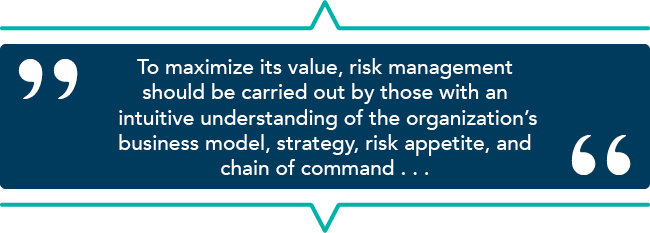Understanding the Modern Tax Landscape
In today’s ever-changing tax world, managing the organization’s tax risk is no easy feat. Demands for tax compliance and financial reporting are soaring in complexity, number, and scope. Tax teams face pressure to provide highly granular reporting, as regulatory bodies like the SEC and IRS intensify scrutiny. And as companies expand their global and digital presence, increased tax management brings additional risks. Compounding the problem: many of these risks exist in a black box – hard to see but still very real.
Bridging the Divide
Layer on today’s hiring challenges, and day-to-day responsibilities dominate the agenda. CFOs tend to focus on high-level strategy and gauge the Tax department’s success by its ability to optimize tax and safeguard the organization. Conversely, tax associates concern themselves with operational aspects, such as meeting deadlines and ensuring timely filings. This disconnect underscores the need for a tax risk management strategy that prepares for unknowns and unifies all stakeholders.
Limitations of Traditional Approaches
Many tax teams have a framework in place aimed at managing tax risk, and from what we’ve seen, about 50% use a formal system. Traditional methods compartmentalize steps and procedures around data, processes, people, and technology. This siloed approach prevents a holistic view of the tax landscape, making it hard to anticipate and respond to risks. Treating these areas as separate entities can also lead to redundant work and a higher chance of errors.
When we think about the broad definition of success – whether it applies to individuals, teams, or organizations – we know that hard work, efficiency, and attention to detail are certainly key components. But they don’t tell the whole story. Success also stems from the environment; think culture, stability, continuity, and leadership. The same goes for tax risk management — because risks are so broad, complex, and amorphous, a set of steps alone won’t do it all — we need to look closely at our environment.
The Importance of Strategic Decisions
Consider the analogy of personal finance: it’s harder to accumulate wealth by taking small steps such as coupon-clipping. It’s easier to build wealth by getting the big decisions right – living within your means, making smart decisions about major purchases, and consistently saving and investing. Similarly, you don’t transform tax risk management with small steps only; you do so with large-scale decisions about your tax environment. The real question we should ask is: What decisions will have a profound and lasting impact on our tax organization’s environment now and in the future?
Let’s discuss two ways Tax can make transformative changes to their environment and greatly improve their tax risk management strategy.
1. The Critical Role of Tax Technology
Effective tax risk management begins with the right technology. Consider some common sources of tax risk:
- Working with incorrect or compromised data
- Late, missed, or inaccurate filings and financial statements
- Business disruptions such as employee turnover and data breaches
- Variance between expected and actual results
- Unaccounted-for or misunderstood tax law changes
While not exhaustive, this list highlights issues we can trace back to time constraints. Given more time, less risk would exist. That’s where tax tech comes in.
Automation, structured data, built-in calculations, transparency, centralization, and standardization — these are the pillars of effective tax technology. They not only save tax preparers and reviewers considerable time, they promote accuracy and empower analytics necessary for meaningful planning. The best part? These benefits compound over time – continually improving process efficiencies and planning activities. An added bonus: tax technology attracts top-tier talent.
Why Tax Technology Should Come First
If you implement technology too late in the game, you may end up forcing it into risk mitigation steps you’ve already set up around your data, processes, and people. This can drive inefficiencies and potentially increase costs to address any gaps.
Think of the modern tax organization as a vehicle: data is the fuel, people are the drivers, processes are the controls, and technology is the engine. Without a good engine, the vehicle goes nowhere. Advanced technology that aligns with your goals is like a Ferrari. Anything less is like a horse-drawn carriage—you may eventually get there, but it’s going to be a slow, bumpy ride.
2. Own Your Data
Some organizations may enlist a firm’s help to define, implement, and monitor policies and procedures around tax risk. Should that be your path, understand the necessity of owning your data and staying involved. For a tax risk management framework to maximize value, it needs to be carried out by those with an intuitive understanding of the organization’s business model, strategy, risk appetite, and chain of command – and it should be understood and respected at all levels of the organization, not just by the C-suite or Board.

Outsourcing tax compliance, financial reporting, or tax planning can lead to an “out-of-sight, out-of-mind” mentality, and tax teams lose touch with the bigger picture. Tax risks have a way of falling through the cracks – they don’t present themselves as items to check off a punch list. Owning your data helps you recognize and address risks and gives you oversight, understanding, and the ability to communicate with and educate colleagues – services third parties rarely prioritize.
The Corptax Difference: Elevating Tax Risk Management
Managing task risk is all about the environment you create within your organization. While traditional tools like Excel and fragmented tax solutions are common, they often don’t meet the demands of today’s fast-paced tax environment. Corptax technology, on the other hand, focuses on tax risk response by integrating key features that provide a secure, standardized, and efficient framework.
Data Security
Data security is essential for managing tax risk effectively. Excel’s limited security features can expose your data to risks, especially when you’re manually moving information between workbooks, modules, and systems. Corptax bypasses these risks by embedding robust security measures within your tax environment. Our secure, centralized data repository protects sensitive tax data and vastly reduces the risk of unauthorized access, preserving data integrity. Instead of spending time managing disparate security protocols, you can focus on strategic risk management and know you’re working with accurate data.
Audit and Review Ready
A key aspect of effective tax management is the ability to trace tax returns or financial statement amounts back to their sources. Excel lacks sufficient audit trail capabilities, making it difficult and time-consuming to verify data origins. Similarly, in tax management, overrides can signal calculation errors due to issues in the tax software or offline calculations. Without the ability to follow calculations from top-line amounts to general ledger details, identifying the cause of discrepancies is challenging. Further, overrides can disrupt the network of calculations, leading to incorrect downstream results.
Unlike other systems, Corptax furnishes complete audit trails from summary-level data down to general ledger details. We make it easy to enter top-line adjustments at the database level without interfering with core calculations, preventing issues from spreading throughout the system. This traceability is crucial for maintaining control over tax processes, ensuring data accuracy and quickly resolving discrepancies. It’s simpler and more efficient for users, and from a risk perspective, it’s more secure and structured.
Corptax also centralizes storage of all tax-related documents, making it easier to manage and retrieve documents during audits and reviews. This reduces the risk of lost or misfiled documents so common in decentralized storage systems like Excel.
Single Source of Truth
Having a single source of truth is vital for reducing tax risk. Traditional tools often involve multiple versions of data files, leading to confusion and potential errors. Corptax ensures that users always work with the most current data, avoiding outdated or incorrect information.
Moreover, traditional tax software solutions often require sequential processing, creating bottlenecks and compressing timelines. Corptax allows multiple users to work on the same or different workstreams simultaneously. This speeds up tax preparation and review, giving teams the time and flexibility to assess and address potential risks. Concurrent processing also reduces the likelihood of mistakes and missed opportunities. Plus, the ability to access the same data in real time facilitates better collaboration. In contrast, Excel files often need to be manually shared and updated, leading to version control issues.
Further, Corptax stays up to date with external changes and embeds the latest tax rules and regulations into the software, ensuring compliance with current legal requirements. Conversely, Excel requires manual updates, which can be error-prone and time-consuming.
Process Standardization and Efficiency
Manually manipulating data introduces significant risks, including data loss, alteration, and mishandling. Automation mitigates these risks. Corptax automates data dependencies, seamlessly integrating compliance, provision, and planning data across all jurisdictions. This decreases the potential for human error, ensures consistency, and frees up tax professionals to focus on strategic activities rather than manual data entry and reconciliation. By enforcing best practices and corporate policies consistently, Corptax not only enhances data security but boosts overall efficiency, transforming the tax environment into a streamlined, effective, and risk-conscious operation.
Comprehensive Reporting and Analytics
Corptax makes it easy to create customizable reports tailored to specific regulatory requirements and internal management needs. With its centralized system, reports are generated using real-time data, ensuring accuracy and relevance. However, Excel and other solutions often require significant manual effort to produce reports. Non-dynamic by nature, they must be manually updated every time information changes.
Corptax also allows customers to use historical data to perform predictive analytics and simulate a multitude of tax scenarios to assess potential risks and impacts. This helps tax teams anticipate future tax liabilities and enables more informed, forward-looking decision-making.
Scalability
As organizations expand and tax regulations evolve, scalability becomes crucial. Corptax is designed to handle complex tax structures and large volumes of data, adapting to new requirements more easily than static tools like Excel. This ensures long-term compliance and efficiency, making the tax environment adaptable to change. By integrating seamlessly with ERP systems, financial reporting tools, and other enterprise applications, Corptax ensures consistent and accurate data flow across the organization, reducing the risk of discrepancies and manual entry errors.
In closing…
In today’s volatile tax environment, traditional approaches to tax risk management no longer suffice. As data volumes grow, processes change, and people come and go, flexible, scalable tax technology is your route to efficient, effective risk management. Evaluate your current processes and consider how tech can help you manage risks with confidence.
Ready to safeguard your company from unforeseen tax risks? Connect with Corptax to structure an effective and efficient tax risk management framework. Reach us at 800.966.1639 or info@corptax.com.
Analyze data from all angles to sharpen planning and reduce risk.
about this topicAbout Carter Butler
As the Product Marketing Manager at CSC Corptax®, Carter Butler is a liaison between tax professionals and internal Corptax teams. He empowers tax teams to optimize their processes with innovative tools that streamline daily tasks and enhance work-life balance. A former tax professional with PricewaterhouseCoopers LLP, Carter used Corptax solutions every day. He is a licensed CPA and holds a M.S. in accounting from University of New Hampshire.
